Did you know that snow pea leaves, also known as snow pea tips or Chinese pea shoots, are not only delicious but also incredibly nutritious? These tender pea leaf greens are packed with vitamins, minerals, and antioxidants that can benefit your health in numerous ways. If you’re looking to add a vibrant and flavorful green to your meals, snow pea leaves are a must-try!
Key Takeaways:
- Snow pea leaves, also known as snow pea tips or Chinese pea shoots, are delicious and nutritious.
- They are packed with vitamins, minerals, and antioxidants.
- Snow pea leaves can be used in a variety of dishes, including stir-fries, salads, soups, and more.
- They have a soft and tender texture similar to baby spinach.
- Snow pea leaves can be found at Chinese grocery stores or substituted with other leafy greens.
Where to Find Snow Pea Leaves
If you’re looking to get your hands on some fresh snow pea leaves, you’re in luck! These delicious greens can usually be found at your local Chinese grocery store. Look for them labeled as “pea shoots” or “pea greens.” The vibrant and tender snow pea leaves make for a fantastic addition to your culinary repertoire.
Can’t find snow pea leaves at your nearest Chinese grocery store? Don’t worry! There are plenty of other leafy greens that can serve as excellent substitutes. Consider trying bok choy, choy sum, Chinese broccoli, spinach, or watercress. These alternatives offer their unique flavors and nutritional benefits, allowing you to experiment and still enjoy the deliciousness of leafy greens in your dishes.
| Leafy Greens | Flavor | Texture |
|---|---|---|
| Bok Choy | Delicate and slightly sweet | Crisp and tender |
| Choy Sum | Mild and slightly bitter | Crisp and tender |
| Chinese Broccoli | Bitter and slightly sweet | Crisp and tender |
| Spinach | Mild and earthy | Tender and soft |
| Watercress | Peppery and slightly bitter | Tender and crunchy |
Experimenting with different greens can open up a world of flavors and textures in your cooking. Whether you’re stir-frying, sautéing, or adding greens to your soups and salads, these alternatives will provide a delightful dining experience.
How to Prepare Snow Pea Leaves
Before cooking snow pea leaves, it’s important to properly prepare them to ensure a clean and tasty dish. Follow these steps to soak, wash, and remove any dirt or sand clinging to the leaves and stems:
- Soak: Start by placing the snow pea leaves in a large bowl or container filled with water. Let them soak for 1 to 2 hours. This will help to loosen any dirt and make it easier to wash them later.
- Wash: After the soaking period, take the snow pea leaves out of the water and give them a thorough rinse under running water. Gently rub the leaves and stems to remove any remaining dirt or sand.
- Repeat: Repeat the washing process 2 to 3 times to ensure all dirt and sand are completely removed. Pay extra attention to the stem parts, as they can trap more debris.
- Drain: Once the snow pea leaves are clean, make sure to drain off all the water. You can use a colander or simply shake off the excess water.
Now your snow pea leaves are ready to be cooked to perfection!
Remember, taking the time to properly prepare your snow pea leaves will ensure a delicious and satisfying dish without any unwanted grittiness or unpleasant surprises.
| Preparation Steps: | Benefits: |
|---|---|
| 1. Soak the snow pea leaves in water for 1 to 2 hours. | – Removes dirt and sand clinging to the leaves and stems – Ensures a clean and grit-free dish |
| 2. Wash the snow pea leaves thoroughly under running water. | |
| 3. Repeat the washing process 2 to 3 times. | |
| 4. Drain off all the water. |
Why is proper preparation important?
Properly preparing snow pea leaves is essential for several reasons:
- Removes dirt and sand: Soaking and washing the leaves ensures that any dirt or sand is removed, preventing a gritty texture in your dish.
- Enhances flavor: Clean snow pea leaves allow the natural, delicate flavors to shine through without any unwanted earthiness.
- Improves texture: Removing dirt and sand ensures a smooth and enjoyable eating experience, free from any unpleasant crunch or grit.
Snow Pea Leaves Stir-Fry Recipe
Looking for a delicious way to enjoy snow pea leaves? Try this simple and flavorful stir-fry recipe that will elevate your greens game. Here’s everything you’ll need:
- 1 tablespoon vegetable oil
- 2 cloves of garlic, minced
- 1 pound of snow pea leaves
- 1/2 teaspoon salt
- 1/4 teaspoon white pepper
- 1 teaspoon sesame oil
Now, let’s get cooking!
- Heat the vegetable oil in a wok over high heat until smoking.
- Add the minced garlic and stir-fry for about 30 seconds, being careful not to burn it.
- Add the snow pea leaves to the wok, tossing and stirring constantly to evenly coat them with the garlic-infused oil.
- After a minute of stirring, season the snow pea leaves with salt, white pepper, and sesame oil.
- Continue stirring and mixing well for an additional minute or two.
- Cover the wok with a lid and let the snow pea leaves cook for 1-2 more minutes, allowing them to wilt slightly.
- Remove the lid, stir briefly to ensure even cooking and seasoning, and then transfer the stir-fried snow pea leaves to a serving dish.
And there you have it! A simple yet delicious stir-fry featuring the delicate flavor and tender texture of snow pea leaves. Serve this dish as a side or enjoy it as a main course with steamed rice or noodles.
Get ready to savor the vibrant taste of snow pea leaves combined with the aromatic garlic and the subtle notes of sesame oil. This stir-fry is a perfect balance of flavors that will leave you coming back for more.
Nutritional Benefits of Snow Pea Leaves
Snow pea leaves are not only delicious, but they also offer a range of impressive nutritional benefits. Packed with essential vitamins, minerals, and dietary fiber, they are a great addition to any healthy diet. Let’s explore the key nutrients found in snow pea leaves:
Beta Carotene
Snow pea leaves are rich in beta carotene, a powerful antioxidant. Beta carotene is converted into vitamin A in the body and helps promote healthy skin, eye health, and immune function. Including snow pea leaves in your diet can contribute to your daily vitamin A needs.
Vitamin C
Snow pea leaves are an excellent source of vitamin C, which plays a crucial role in supporting a strong immune system. Vitamin C also acts as an antioxidant, helping protect cells from damage and promoting skin health.
Folate
Folate, also known as vitamin B9, is essential for DNA synthesis and cell growth. Snow pea leaves are a good source of folate, which is especially important for pregnant women to support proper fetal development.
Fiber
Snow pea leaves are high in dietary fiber, which is essential for maintaining a healthy digestive system. Fiber promotes regular bowel movements, helps control blood sugar levels, and supports heart health.
Immunity Boost
The combination of beta carotene and vitamin C found in snow pea leaves can help boost your immune system. These nutrients support the production of white blood cells, which play a key role in fighting off infections and keeping your body healthy.
Incorporating snow pea leaves into your meals is a great way to enhance your nutrient intake and promote overall well-being.
| Nutrient | Amount in Snow Pea Leaves | Comparison |
|---|---|---|
| Beta Carotene | High | 7 times more than blueberries |
| Vitamin C | High | 7 times more than blueberries |
| Folate | High | 8 times more than bean sprouts |
| Fiber | High | N/A |
| Vitamin A | High | 4 times more than tomatoes |
What Do Snow Pea Leaves Taste Like?
Snow pea leaves have a soft and tender texture similar to baby spinach. The stem parts are hollow in the middle and crisp in texture. When quickly sautéed with garlic, snow pea leaves have a delicious flavor that pairs well with other ingredients.
If you’re a fan of delicate greens with a tender bite, snow pea leaves will be a delightful addition to your culinary repertoire. The soft and tender texture of snow pea leaves is reminiscent of baby spinach, making them a versatile ingredient in a variety of dishes.
“The taste of snow pea leaves is mild and slightly sweet, with subtle hints of earthiness. The leaves themselves are tender and velvety, offering a pleasant mouthfeel when cooked. The stem parts provide a satisfying crunch, adding an enjoyable textural contrast to dishes.”
The flavor profile of snow pea leaves shines when they are quickly sautéed with garlic. The gentle sautéing process allows the leaves to retain their vibrant green color while enhancing their natural flavors. The addition of garlic adds a savory depth, creating a mouthwatering aroma that will entice your taste buds.
Whether incorporated into stir-fries, added to soups, or used as a base for salads, snow pea leaves bring a delightful combination of softness, tenderness, and a touch of crispness. Their versatile nature allows them to complement a wide range of ingredients, making them an excellent choice for both vegetarian and meat-based dishes.
The next time you’re craving a soft and tender green vegetable with a delicate yet refreshing taste, consider using snow pea leaves in your cooking. Their subtle sweetness, paired with the crispness of the stem parts and the delectable flavor of garlic, will elevate your dishes to new heights.
How to Select and Clean Snow Pea Leaves
When it comes to preparing snow pea leaves for cooking, selecting the right ones and properly cleaning them is essential. Follow these steps to ensure you have the crispiest and cleanest snow pea leaves for your dishes:
Selecting Snow Pea Leaves
When selecting snow pea leaves, look for vibrant and crispy leaves without any brown or mushy parts. These are signs of freshness and will ensure the best flavor and texture. Avoid stems that look dry and brittle, as they will be tough to chew.
Cleaning Snow Pea Leaves
To clean snow pea leaves, give them a nice rinse in room temperature or slightly cold water. This will help remove any dirt or impurities clinging to the leaves. Make sure to drain them well so they are not mushy when cooked.
Inspect the leaves closely and remove any wilted or soiled parts. This will ensure that only the freshest and cleanest parts of the snow pea leaves are used in your dish.
These delicate greens should be cooked soon after purchase to maintain their crispy texture and vibrant flavor. Now that you know how to select and clean snow pea leaves, you’re ready to create delicious dishes using these nutritious greens!
Cooking and Pairing Snow Pea Leaves
Snow pea leaves are a versatile and nutritious vegetable that can be cooked in various ways. Whether you prefer sauteing, steaming, or boiling, these greens can be easily incorporated into your favorite dishes. Not only do they add a vibrant touch to any recipe, but they also offer a delightful flavor that pairs well with proteins.
One of the popular ways to cook snow pea leaves is to saute them in a light garlic sauce. This simple yet delicious method enhances the natural flavors of the greens and creates a perfect harmony with proteins like chicken, tofu, or shrimp. The sauteed snow pea leaves can be served as a side dish or added to stir-fries and noodle dishes.
If you prefer a lighter cooking method, you can steam the snow pea leaves. Steaming helps to retain the nutrients and vibrant color of the greens while creating a tender and slightly crispy texture. Steamed snow pea leaves can be served on their own or used as a bed for grilled fish or steamed tofu.
For those who enjoy a more traditional approach, boiling snow pea leaves is another option. Boiling is a quick and easy method that preserves the bright green color and crisp texture of the greens. Boiled snow pea leaves can be added to soups, incorporated into dumpling fillings, or used as a nutritious topping for rice or noodles.
Snow pea leaves can also be used as a substitute for spinach in many recipes. Whether you’re making a creamy pasta dish, a light salad, or a nutritious smoothie, snow pea leaves bring a unique twist to classic recipes.
To give you an idea of how versatile snow pea leaves can be, here’s a simple recipe for sauteed snow pea leaves in a light garlic sauce:
Ingredients:
- 1 pound snow pea leaves
- 2 tablespoons vegetable oil
- 3 cloves garlic, minced
- 1/2 teaspoon salt
- 1/4 teaspoon white pepper
- 1 teaspoon sesame oil
Instructions:
- Heat the vegetable oil in a large pan or wok over medium heat.
- Add the minced garlic and saute for about 1 minute until fragrant.
- Add the snow pea leaves and stir-fry for 2-3 minutes until wilted.
- Season with salt, white pepper, and sesame oil. Stir well to combine.
- Transfer the sauteed snow pea leaves to a serving dish and serve hot.
So go ahead and explore the culinary possibilities of snow pea leaves. Experiment with different cooking methods and pairings to create delicious and nutritious meals that your whole family will love!
Pea Greens vs. Pea Shoots
When it comes to pea plants, both the leafy parts and the young shoots have their own unique characteristics and culinary uses. Pea greens, also known as pea shoots or snow pea leaf, refer to the leafy parts of a young pea plant. These tender greens offer a delicate flavor and a texture comparable to spinach and the green part of bok choy. Whether enjoyed raw in salads or cooked in various dishes, pea greens bring a refreshing and crispy touch to any meal.
On the other hand, pea shoots, often referred to as pea tendrils, are the young, curly stems of the pea plant. They are composed of the first few leaves and the growing tips. Pea shoots have a milder flavor compared to pea greens, with a subtle hint of sweetness. These young shoots are commonly used in stir-fries and can be enjoyed either raw or cooked.
In summary, here’s a breakdown of the main differences between pea greens and pea shoots:
- Leafy Parts: Pea greens consist of the leafy portions of a young pea plant.
- Young Shoots: Pea shoots are the curly stems and growing tips of the pea plant.
- Flavor and Texture: Pea greens have a flavor and texture similar to spinach and bok choy greens, while pea shoots offer a milder taste.
- Preparation: Pea greens can be enjoyed raw in salads or cooked in soups and stir-fries, while pea shoots are commonly used in stir-fried dishes.
Why Choose Pea Greens?
Pea greens are a versatile ingredient that can add a delightful crunch and a burst of flavor to your dishes. Their crispy texture makes them an excellent choice for salads, adding freshness and vibrancy to every bite. Additionally, pea greens can be lightly sautéed or blanched to preserve their natural taste and texture. They can be used as a substitute for spinach in recipes, offering a delightful twist with their distinct flavor.
“Pea greens are a versatile ingredient that can add a delightful crunch and a burst of flavor to your dishes.”
Not only do pea greens contribute to the overall sensory experience of a dish, but they also provide nutritional benefits. These tender greens are packed with essential vitamins and minerals, including folate, vitamin A, and vitamin C. They are also a good source of fiber, promoting digestive health.
So, whether you’re looking for a crispy addition to a refreshing salad or a vibrant green to incorporate into your cooked recipes, pea greens are a fantastic choice. Their unique flavor, texture, and nutritional value make them a delightful addition to any culinary repertoire.
Get creative with pea greens and discover how their crunchy texture and delicate flavor can elevate your salads, stir-fries, and other dishes. Explore the possibilities and enjoy the fresh and vibrant taste of pea greens in your next culinary adventure!
The Availability and Nutritional Value of Pea Greens
Pea greens are a versatile and nutritious vegetable, with a wide range of health benefits. They are generally available year-round, but they are more widely available during the spring and early summer seasons.
Pea greens are packed with essential nutrients that contribute to a healthy diet. They are an excellent source of:
- Vitamin A: Supports healthy vision and immune function.
- Vitamin C: Helps boost the immune system and promotes collagen production.
- Iron: Essential for transporting oxygen throughout the body.
- Calcium: Important for maintaining strong bones and teeth.
- Protein: Supports cell growth, repair, and muscle development.
- Folic acid: Vital for cell division and the production of red blood cells.
Despite their nutritional value, pea greens are low in calories, making them an ideal addition to a balanced and healthy diet. They offer a satisfying and filling option without compromising on flavor or nutrient content.
If you’re looking to incorporate more nutrient-dense and low-calorie vegetables into your meals, pea greens are a fantastic choice.
| Nutrient | Amount per serving |
|---|---|
| Vitamin A | 30% of daily value |
| Vitamin C | 50% of daily value |
| Iron | 15% of daily value |
| Calcium | 10% of daily value |
| Protein | 5 grams |
| Folic acid | 25% of daily value |
Conclusion
Snow pea leaves, also known as pea greens, are a versatile and nutritious addition to your culinary repertoire. These delicious greens can be enjoyed in a variety of ways, from stir-fries to soups, and they bring a delightful flavor and texture to any dish. Incorporating snow pea leaves into your cooking not only adds depth and vibrancy to your meals but also provides numerous health benefits.
With their high content of vitamins and minerals, snow pea leaves are a nutritious choice for those looking to enhance their diet. Packed with vitamin C, vitamin A, and folate, these greens can help boost your immune system and support overall well-being. They also offer a good source of fiber, which aids in digestion and promotes a healthy gut.
Thanks to their tender and soft texture, snow pea leaves are incredibly versatile. Whether you choose to sauté them with garlic, steam them as a side dish, or incorporate them into a hearty soup, their delicious flavor shines through. Plus, with their vibrant green color, snow pea leaves add visual appeal to your culinary creations, making every dish more enticing.
Explore the wide array of recipes that feature snow pea leaves as the star ingredient. From simple stir-fries to refreshing salads, there’s an abundance of culinary possibilities to discover. So why not get creative in the kitchen and add these delicious, nutritious, and versatile pea greens to your next meal?

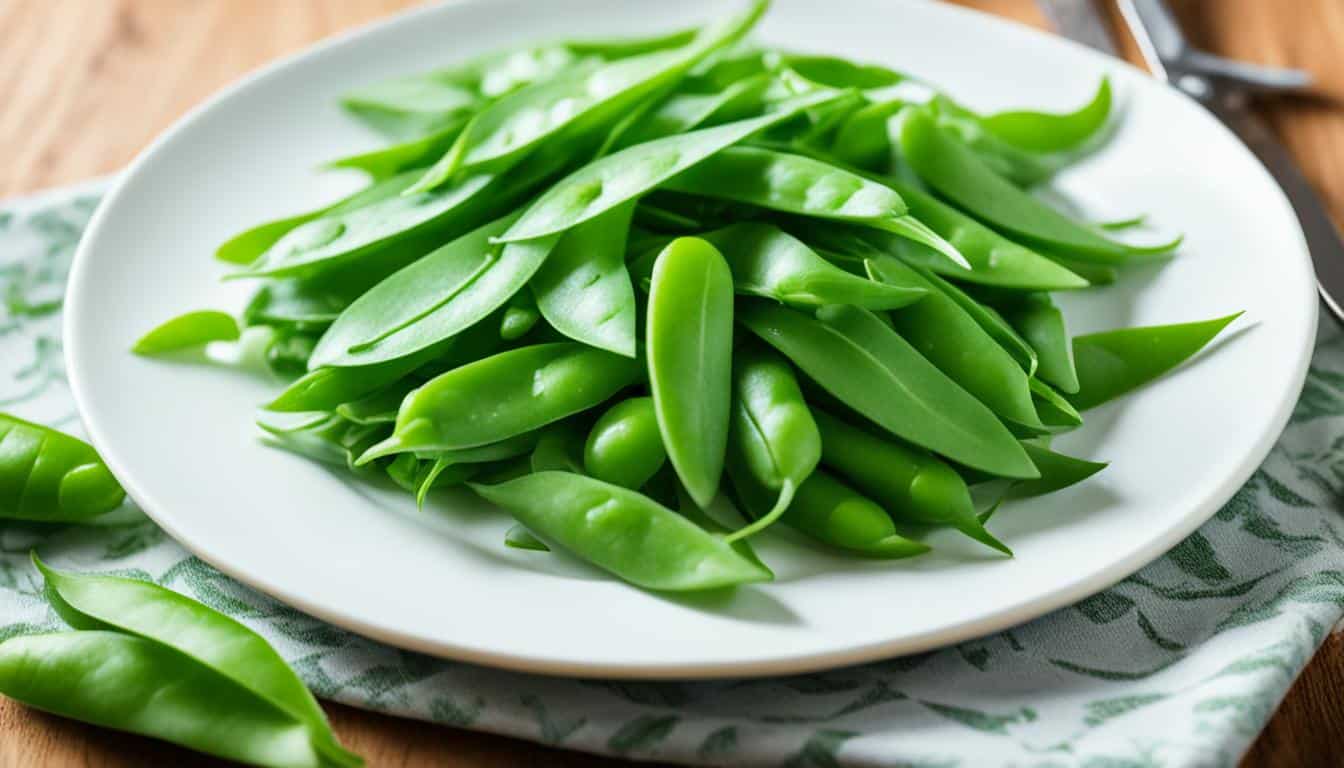
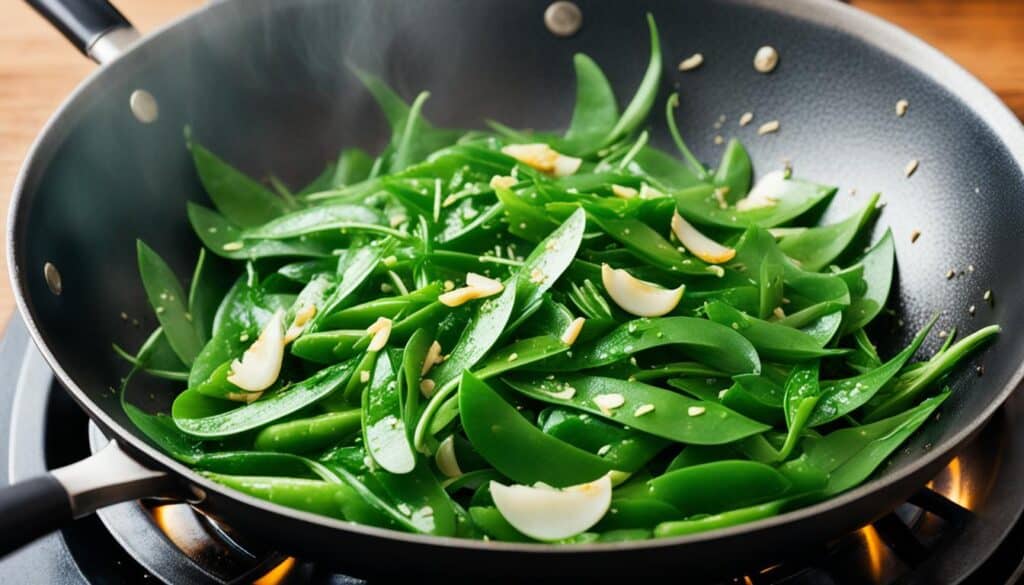
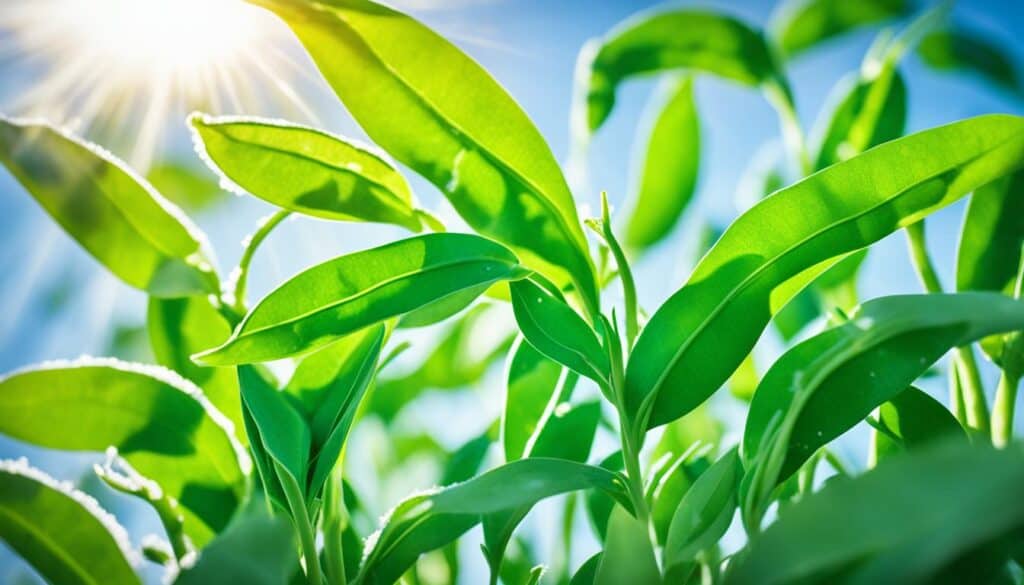
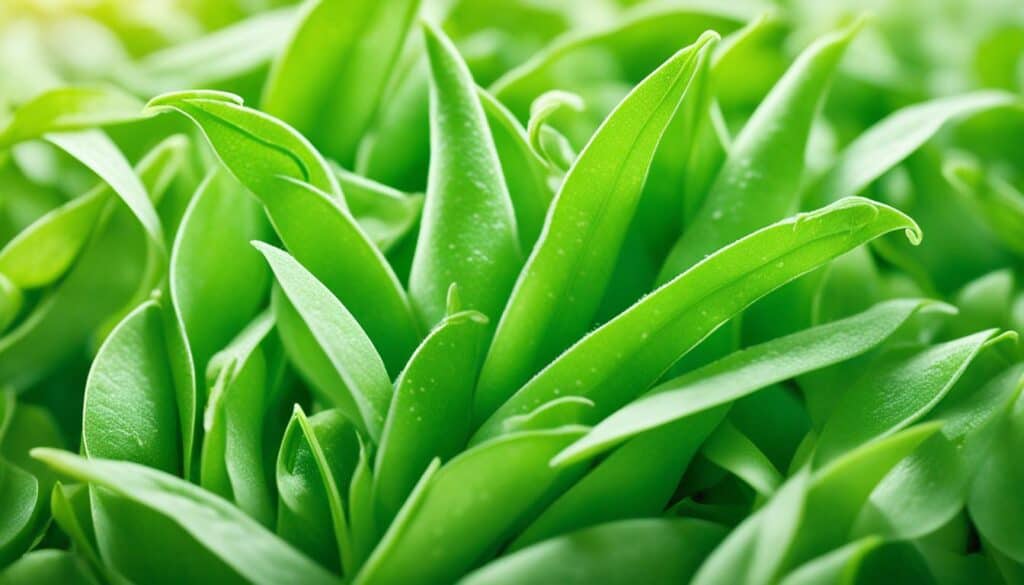
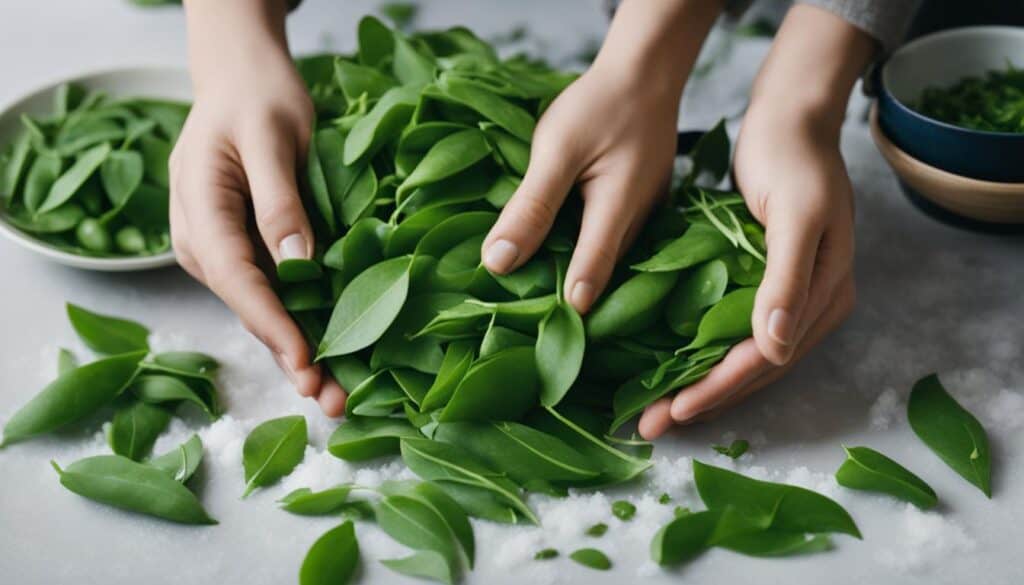
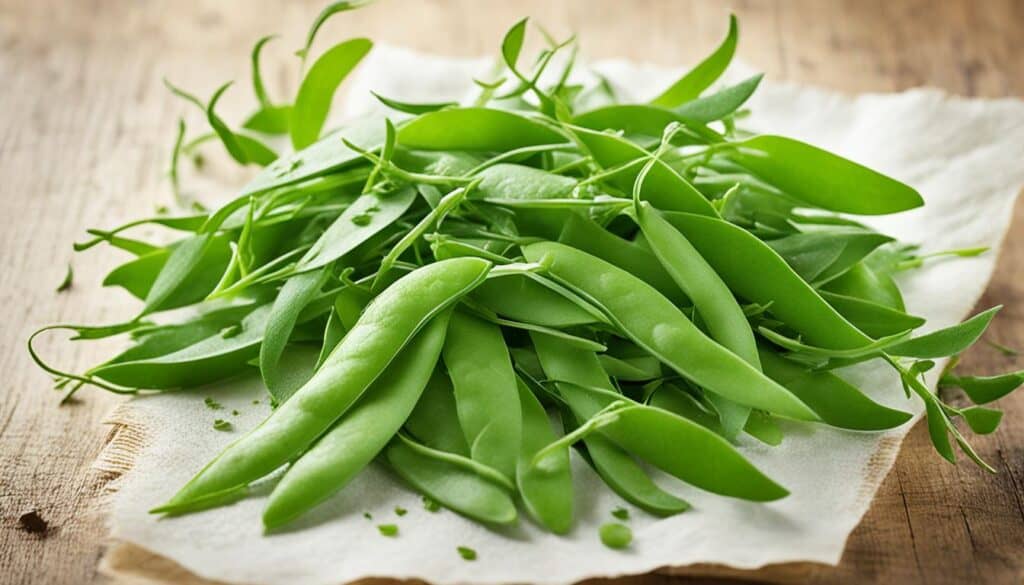



Leave a Reply